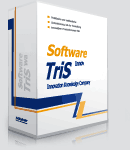|
|

| Home | ||
| Services | ||
| Methods | ||
| Software | ||
| Company | ||
| Contact |
 |
Our Customers Our customers are R&D and marketing departments and new product development centres of corporations as well as small and medium manufacturing and service enterprises. more » |
| TRIZ - Methodology | |||||
| Advanced Innovation Design Approach AIDA | |||||
| TriS-IDEAS Toolbox | |||||
 | |||||
|
|||||
| Origin of TRIZ TRIZ is the internationally acknowledged abbreviation for the "Theory of Inventive Problem Solving". TRIZ was developed between 1960 and 1980 by the engineer and science fiction author Genrich Altshuller (1926-1998) and his co-workers (first publication in 1956). In contrast to the common "trial and error" problem solving methods such as brainstorming, synectics, morphological analysis etc, TRIZ only relies on the unbiased laws of evolution of technical systems and therefore enables a focussed search for possible solutions. The discovery and structuring of these laws, as well as other TRIZ components, has been the result of the study and analysis of globally available patents over a period of several decades. TRIZ is regarded today as the most comprehensive, systematically organized invention knowledge and creative thinking methodology known to man. As underlined in the Standard of the Association of the German Engineers VDI4521 (2016-2022) "Inventive Problem Solving with TRIZ", the TRIZ methodology has the following advantages over traditional innovation supporting methods: | ||
|
The TRIZ Concept
What TRIZ essentially does is identify, exaggerate and eliminate technical and physical contradictions in technical systems and processes instead of trying to find a "half-hearted" compromise. The term "technical contradiction" (TC) - is the key to the TRIZ concept. A TC represents two contradictory properties of a technical system: improving one part or property of a machine (e.g. engine power) automatically changes another property for the worse (e.g. weight or fuel consumption). According to TRIZ, a problem is solved only if a TC is recognized and eliminated. So-called 'habitual blindness', psychological inertia and the all too common tendency to make compromises are all overcome in a logical way. Not only is the scope of the search considerably reduced in size even in the most difficult of cases, TRIZ also opens up completely new ways of thinking. |
||
|
TRIZ Components
The most important components in classical TRIZ can be summarised in the table below with regard to the different ways of solving technical problems. The simpler methods, for example, the 40 inventive principles, can be integrated more easily as problem-solving tools but have some restrictions as to their efficiency in solving complex problems. The most important components of classical TRIZ include the following: |
|
© 1998-2025 TriS Europe |

